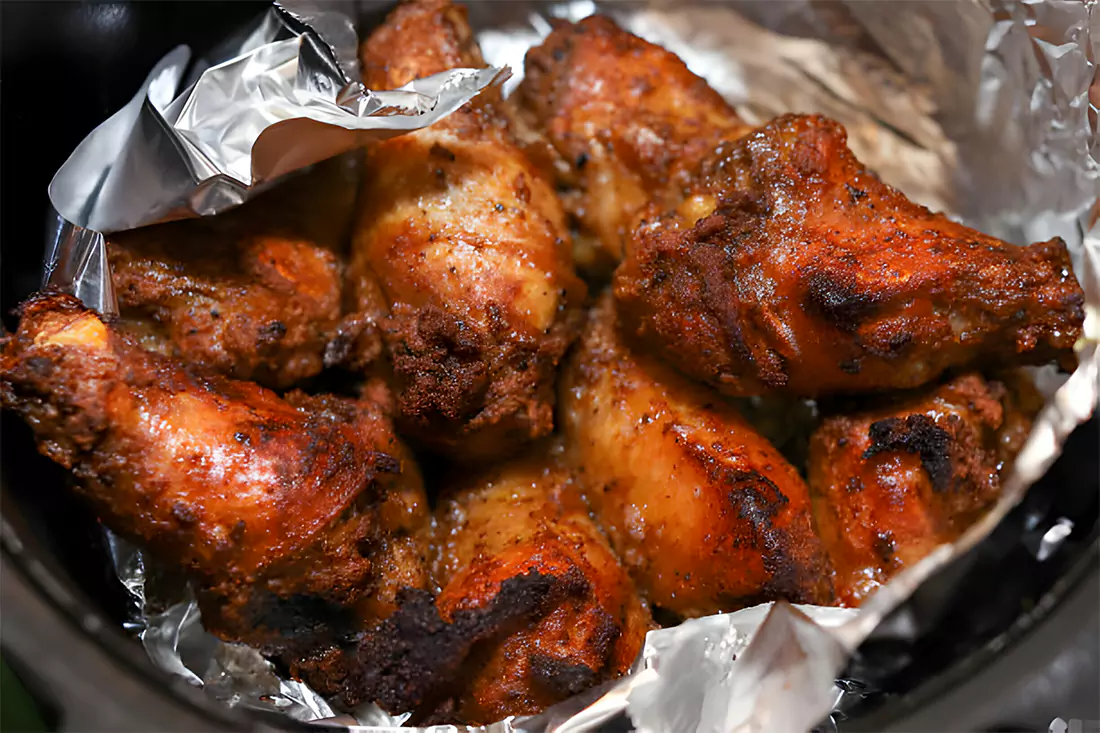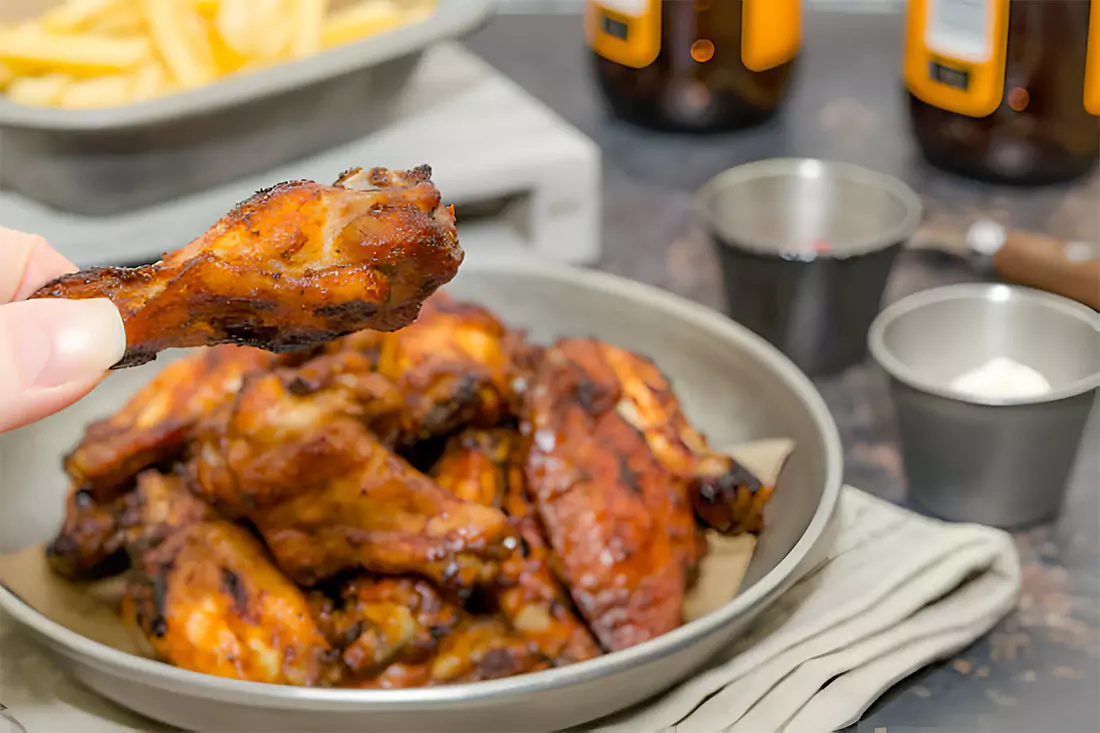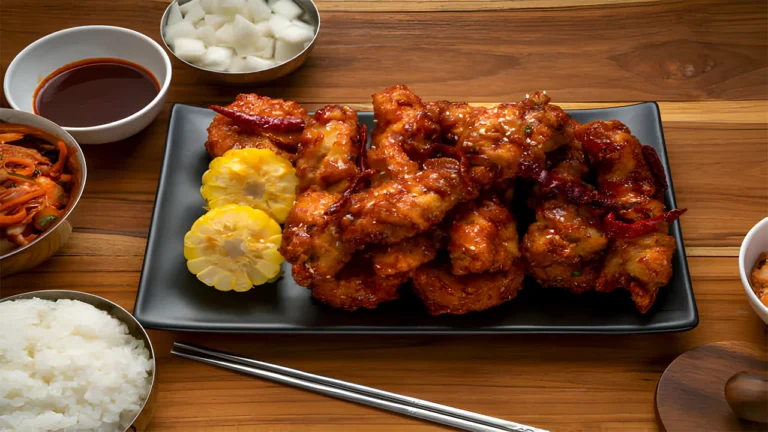Reheat Chicken Wings Air Fryer: The Ultimate Guide
Discover the art of using an air fryer to reheat chicken wings, ensuring they are as crispy and delicious as when they were first served. This guide provides step-by-step instructions on how to perfectly reheat chicken wings in an air fryer, transforming your leftovers into a mouth-watering treat. Dive into the world of quick, easy, and efficient reheating methods that bring out the best in your chicken wings.
The Convenience of Using an Air Fryer
The air fryer is a marvel of modern kitchen technology, offering a quick and easy way to reheat food. It’s particularly adept at bringing back the crispy texture of chicken wings, which can be a challenge with other reheating methods. The air fryer uses hot air circulation, mimicking the effects of frying without the need for excessive oil. This not only makes the process simpler and faster but also healthier.
Benefits Over Traditional Methods
When compared to conventional reheating methods like microwaving or oven-baking, the air fryer stands out for its ability to maintain the quality of the chicken wings. Microwaves can leave your wings rubbery and unevenly heated, while ovens take considerably longer to achieve the desired crispiness. The air fryer, on the other hand, offers a perfect balance, delivering crispy, juicy wings in a fraction of the time. Plus, it’s a more health-conscious choice, reducing the amount of oil and potentially harmful carcinogens in your food.
Pre-Reheating Preparation
Before you pop those wings into the air fryer, a bit of prep work is essential. This stage is crucial for ensuring your chicken wings reheat evenly and come out as delicious as they were originally.
Bringing Wings to Room Temperature
First things first, let’s talk about temperature. It’s vital to bring your chicken wings to room temperature before reheating them. Why, you ask? Well, if you reheat them straight from the fridge, you risk having them heat unevenly. This could mean some parts are piping hot while others remain cold. To avoid this culinary mishap, let your wings sit out on the counter for about 30 minutes. This simple step is a game-changer for achieving that perfect chicken crunch.

Preheating the Air Fryer
Next up, preheating your air fryer. Much like you would preheat an oven for baking, preheating your air fryer ensures a consistent cooking environment right from the get-go. Set your air fryer to around 350 to 375 degrees Fahrenheit. This temperature range is the sweet spot for getting those wings crispy on the outside while keeping them juicy on the inside. If you’re in a bit of a hurry, nudging the temperature up to 375 degrees can speed up the process, but keep a close eye to avoid overcooking.Learn more about temperature adjustments for different types of wings in this article by The Short Order Cook on How to Reheat Chicken Wings in the Air Fryer.
Air Fryer Magic: How to Reheat Chicken Wings Effectively
Now that your chicken wings are at room temperature and your air fryer is preheated, it’s time to get down to the business of reheating. This part of the process is where the magic happens, turning those limp leftovers into crispy, tantalizing treats.For more insights on the reheating process, check out this detailed guide on How to Reheat Wings in the Air Fryer by Everyday Family Cooking.
Arranging Wings in the Air Fryer
The key to perfectly reheated wings is in the arrangement. Place your wings in the air fryer basket in a single layer, ensuring there’s about an inch of space between each piece. This space is crucial for allowing hot air to circulate freely, ensuring each wing gets evenly crisped. Remember, overcrowding is a big no-no – it can lead to uneven cooking and soggy spots. If you have a lot of wings, it’s better to work in batches than to cram them all in at once.
Optimal Temperature and Time Settings
For the ideal balance of crispiness and juiciness, set your air fryer to 350 degrees Fahrenheit. If you’ve preheated to 375 degrees for a quicker reheat, that’s fine too, but keep a close eye to prevent overcooking. Generally, it takes about 7 to 10 minutes to reheat chicken wings in the air fryer. Halfway through the cooking time, give the basket a good shake or use tongs to flip the wings. This ensures all sides get that desirable crispy texture.
Flipping and Ensuring Even Cooking
Flipping your wings halfway through the cooking process is a small step that makes a big difference. It’s all about even exposure to the air fryer’s heat. By turning the wings, you’re making sure each side gets its moment in the hot air spotlight, leading to evenly cooked, perfectly crispy wings.

Quality Check: Ensuring Perfectly Reheated Wings
Reheating chicken wings in an air fryer isn’t just about achieving that perfect crunch; it’s also about ensuring they are safe to eat and of the best quality. Here are some key considerations to keep in mind.
Checking Internal Temperature
Safety first! To ensure your chicken wings are not only delicious but also safe to eat, it’s crucial to check their internal temperature. The ideal internal temperature for cooked poultry, as recommended by the USDA Poultry Safety Guidelines, is at least 165 degrees Fahrenheit. Use a meat thermometer to check the thickest part of the wing. This step is especially important if you’re reheating wings that were stored in the refrigerator for a couple of days.
Avoiding Overcrowding
Overcrowding your air fryer can lead to unevenly reheated wings, with some parts crispy and others not so much. It can also affect the overall quality, leaving you with wings that are less than appetizing. To avoid this, make sure to arrange the wings in a single layer with space between them, as mentioned earlier. This allows for optimal air circulation, ensuring each wing is evenly exposed to the heat and comes out perfectly crispy.Just like ensuring a moist Bundt cake, keeping chicken wings moist during reheating is crucial.

Enhancing the Reheating Experience
Reheating chicken wings in an air fryer is more than just a basic kitchen task; it’s an opportunity to elevate a simple dish into something extraordinary. Here are some additional tips and tricks to enhance the flavor and texture of your reheated chicken wings.
Achieving Crispiness
For that ultimate crispy exterior, there are a few tricks you can employ. If you find your wings are a bit dry, a light spritz of water before reheating can help. But here’s a better hack: lightly coat the wings with a thin layer of extra virgin olive oil. This not only helps in achieving a golden, crispy skin but also adds a subtle flavor enhancement. Remember, the goal is a light coat; too much oil can make the wings greasy.
Dealing with Dry Wings
If your leftover wings are on the drier side, don’t fret. A quick spritz of water can help reintroduce moisture. However, the real secret lies in the sauce. After reheating, toss the wings in your favorite sauce. This not only masks any dryness but also gives the wings a delicious flavor boost. Whether it’s a classic buffalo sauce or a sweet and tangy barbecue, the right sauce can make all the difference.If you’re dealing with dry wings, similar to avoiding dryness in Bundt cakes, a light spritz of water can help.
Sauce Application Techniques
Speaking of sauce, the way you apply it can change the game. For an even coating, place the reheated wings and sauce in a bowl and give it a good toss. This ensures every nook and cranny of the wing is covered in saucy goodness. If you prefer a lighter touch, use a brush to gently apply the sauce over the wings, giving you control over how much sauce is used.For an even more flavorful experience, consider pairing your reheated wings with a classic Buffalo Chicken Dip.
Ingredients
- Leftover chicken wings (as many as you’d like to reheat)
- Extra virgin olive oil (optional, for extra crispiness)
- Your favorite wing sauce (optional, for flavor enhancement)
Directions
-
Bring Wings to Room Temperature
- Remove the chicken wings from the refrigerator and let them sit at room temperature for about 30 minutes. This step is crucial for even reheating.
-
Preheat the Air Fryer
- Preheat your air fryer to 350-375 degrees Fahrenheit. The exact temperature may vary depending on your air fryer model.
-
Prepare the Wings (Optional)
- If your wings are a bit dry, lightly spritz them with water. For extra crispiness, you can lightly coat them with a thin layer of extra virgin olive oil.
-
Arrange Wings in Air Fryer
- Place the wings in the air fryer basket in a single layer. Ensure there’s about an inch of space between each wing for optimal air circulation.
-
Reheat the Wings
- Cook the wings for about 7-10 minutes. If your air fryer is set to 375 degrees, start checking them at 7 minutes to prevent overcooking.
-
Flip Halfway Through
- Halfway through the cooking time, shake the basket or use tongs to flip the wings. This ensures all sides get evenly crisped.
-
Check for Doneness
- Use a meat thermometer to check that the internal temperature of the wings has reached at least 165 degrees Fahrenheit, as per USDA guidelines.
-
Add Sauce (Optional)
- If desired, toss the reheated wings in your favorite sauce. For an even coating, place the wings and sauce in a bowl and toss them together.
-
Serve and Enjoy
- Once reheated to your satisfaction, remove the wings from the air fryer. Serve them immediately for the best texture and flavor.
Enjoy your deliciously reheated chicken wings, now crispy and full of flavor, just like when they were freshly made!
Air Fryer Variations and Adjustments
Air fryers come in all shapes and sizes, each with its own set of features and cooking intensities. Understanding how to adjust your reheating technique to accommodate these differences is crucial for achieving the best results with your chicken wings.
Adjusting for Air Fryer Intensities
Different air fryer models can vary significantly in how they distribute heat. Some may cook hotter and faster, while others might take a bit longer to reach the desired crispiness. If you’re using a new air fryer or one you’re not familiar with, it’s a good idea to start with a test batch. Reheat one or two wings first to gauge the cooking time and temperature needed for that specific model. This trial run can prevent you from ending up with undercooked or overcooked wings.
Model-Specific Instructions
Each air fryer model may come with its own set of instructions and recommendations. It’s important to familiarize yourself with these guidelines. For instance, some models might require preheating, while others do not. Additionally, the capacity and airflow design of your air fryer will dictate how many wings you can reheat at once without overcrowding. Always refer to your air fryer’s manual for the best practices specific to your model.
Frequently Asked Questions
In this section, we address some of the most common questions about reheating chicken wings in an air fryer. These FAQs are designed to help you navigate any uncertainties and enhance your cooking experience.
Common Queries and Concerns
-
How long should I reheat chicken wings in an air fryer?
- Typically, it takes about 7 to 10 minutes at 350 degrees Fahrenheit. However, this can vary depending on the size of the wings and your specific air fryer model.
-
Can I reheat frozen chicken wings in an air fryer?
- Yes, you can reheat frozen wings in an air fryer. However, the cooking time will be longer, and it’s recommended to defrost them first for more even heating.
-
Is it necessary to use oil when reheating wings in an air fryer?
- It’s not necessary, but a light spray of oil can help achieve a crispier texture.
Expert Answers and Solutions
-
How do I know when the chicken wings are fully reheated?
- The best way is to use a meat thermometer to check that the internal temperature has reached at least 165 degrees Fahrenheit, as per USDA guidelines.
-
Can I reheat sauced wings in an air fryer?
- Yes, you can reheat sauced wings. However, reheating them plain and then applying sauce afterward can help maintain a crispier texture.
-
How can I prevent the wings from drying out in the air fryer?
- Avoid overcooking and consider a light spritz of water or oil before reheating. Also, letting them come to room temperature before reheating helps.
